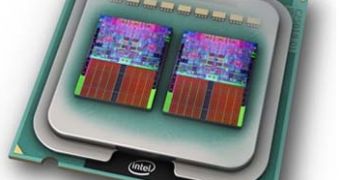Seeing how the future is represented by multiple CPU cores, linked together in various ways to give out anything from a simple dual-core offering, to a network array of cores. Whether they are necessary or not, or if the people are going to use such technologies, isn't a matter of discussion, the future has already been planned ahead for us, and I do mean FOR us, and not BY us.
But one market isn't enough for a company to make a successful development; it requires redundancy, two or more markets which would use one another; in case one goes down, the other sustains it. Such is the case with most of the CPU manufacturers; they target both the desktop and mobile markets, as well as the server business. But the trend is to expand, expand where? Wherever they can, such is the case with AMD, which took it upon themselves to supply LG with their ImageOn processor that got used on the, oh, so popular, KE850 PRADA phone.
In this line of business, being number one doesn't mean anything as long as you can't hold on to that spot, and it's usually the case of everybody wanting a piece of your pie, you being the top dog and all. But, from time to time, somebody cracks the ice with an idea that gets marketed before everybody else's, and such is the case with Resesas Technology Corp., a company that is set to bring multicore processors to embedded devices and applications. One of their first products in this series is the SH2A-Dual multicore microcontroller. It is being expected to be used in applications by July of this year, and it is probably, as the commercial said it, the best multicore processor for embedded applications in the world.
It is quite powerful, the little bugger, by offering "480 Mips and 400 Mflops performance at 200MHz". The SH-DUAL can be used in combination with any operating systems; it already got tested on two OSes, each being integrated into each of the two cores it has: the first one used microITRON and the second one microClinux. It was demonstrated by using it to control server communications with one core and for playback of three simultaneous audio streams by the other. A quad-core processor for these embedded applications has been developed and will be introduced next year.
Hiroyuki Iwashita, department manager of Renesas MCU product marketing division said: "Renesas's multicore solution is, we believe, the first for embedded applications. The dual-core processor can realize high performance comparable to or better than widely used combinations of a controller and a DSP. The CPU and DSP combination requires software development for both the CPU and DSP. The Renesas dual-core processor has two similar core processors, so the same programmer can develop software using the same development tool. This reduces development time significantly."

 14 DAY TRIAL //
14 DAY TRIAL //